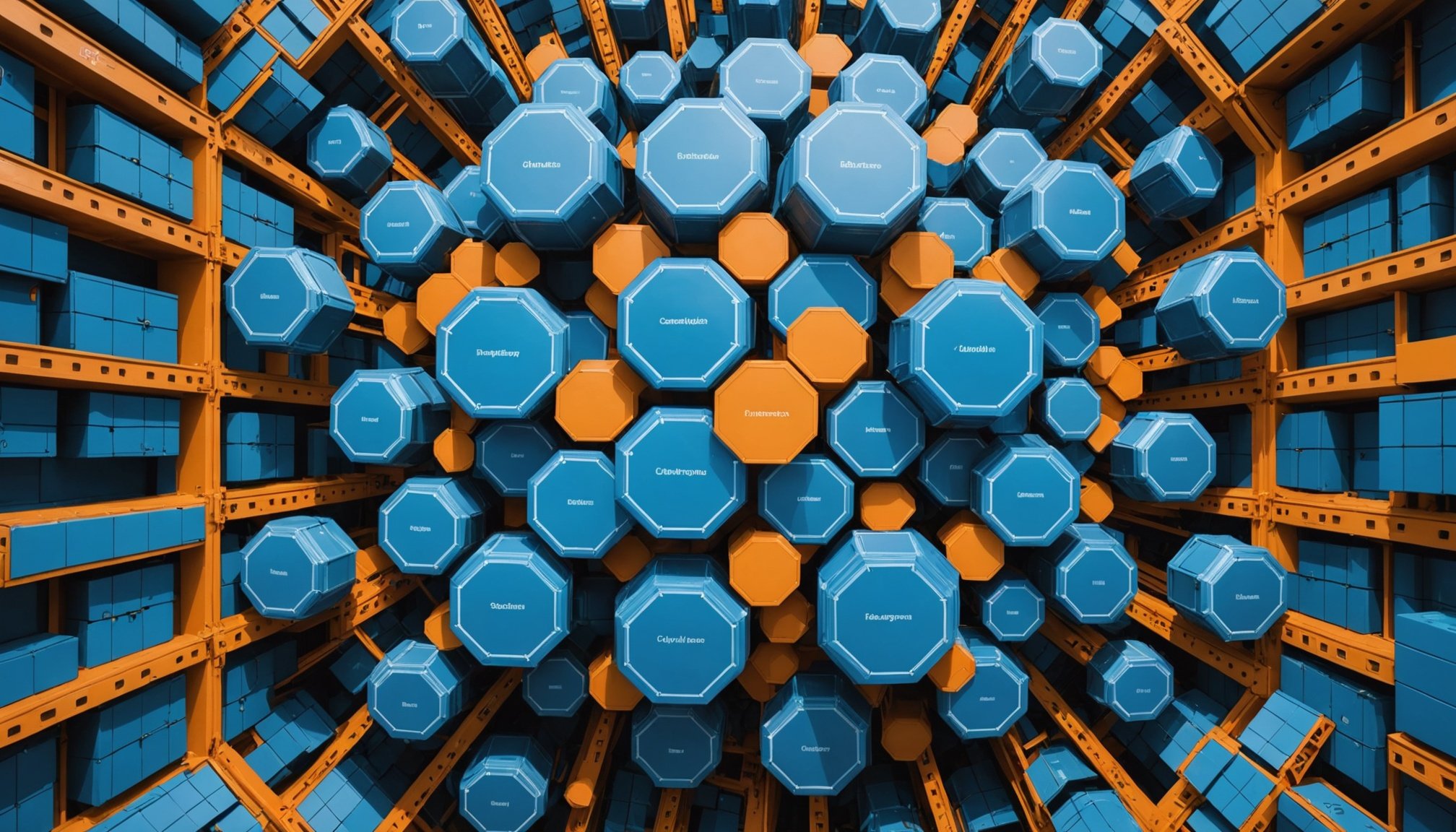Understanding Multi-Tenant Kubernetes Security Needs
In the world of cloud computing, multi-tenant security is crucial, especially within Kubernetes environments. A multi-tenant architecture allows multiple users or organisations to share a single infrastructure while maintaining privacy and operational independence. While this architecture increases resource efficiency, it also introduces unique security challenges.
In Kubernetes architecture, each tenant operates within the same cluster, making the security of shared resources paramount. The importance of safeguarding sensitive data in such shared environments cannot be overstated. Unauthorized access could lead to significant data breaches, impacting multiple users at once.
Topic to read : Exploring Innovative Techniques for Real-Time AI Integration in Healthcare Diagnostics
Securing a multi-tenant Kubernetes cluster involves focusing on several key areas:
- Isolation: Ensure strict isolation between tenants to prevent data leakage and unauthorised access.
- Authentication and Authorisation: Implement robust mechanisms to verify user identity and control access to resources.
- Network Policies: Establish clear network boundary rules to minimise exposure to potential threats and secure tenant communications.
By addressing these challenges, organisations can foster a secure framework within their multi-tenant Kubernetes setups, preserving data integrity and enabling efficient, scalable cloud operations. It is paramount for organisations to continuously evaluate their Kubernetes security practices to maintain resilience against emerging threats.
Also read : Essential Strategies for Building a Robust and Secure Edge Computing Infrastructure”
Access Control Measures for Kubernetes
Implementing role-based access control (RBAC) is crucial in securing your Kubernetes environment. RBAC enables the definition of roles that determine permissions, ensuring that users only access necessary resources. Start by outlining all roles your team requires, considering the principle of least privilege. This method minimizes potential security threats by restricting access to only what is essential for each role’s tasks. Next, configure RBAC by setting up roles, bindings, and service accounts meticulously on Kubernetes.
Implementing Role-Based Access Control (RBAC)
Define clear roles and permissions by mapping tasks to roles and assigning permissions that align with these tasks. Use the Kubernetes API to create role definitions and apply bindings. Ensure you test these configurations thoroughly. In complex environments, consider using automation tools to manage RBAC configurations and keep them consistent.
Integrating Authentication Methods
Kubernetes supports varied authentication mechanisms, including certificates, tokens, and third-party providers like OIDC and OAuth. Choose a mechanism based on factors such as your infrastructure, user base, and security requirements. Certificates offer robust security, but may need additional management efforts, while external providers streamline user management and authentication processes.
Regular Access Audits
Conducting regular access audits is vital to maintaining security. Kubernetes provides tools like kube-apiserver and external plugins for auditing. These tools help track access patterns, highlight anomalies and ensure your RBAC configurations remain effective and secure in dynamic environments. Consistent monitoring can prevent unauthorized access and ensure compliance with security policies.
Network Policies to Secure Traffic
In today’s interconnected environments, managing network policies is crucial for safeguarding data and ensuring reliable communication.
Creating Effective Network Policies
Crafting effective network policies requires understanding their components. Key elements in a Kubernetes network policy include pod selectors, policy types (Ingress and Egress), and defining rules for allowing or denying traffic based on IP blocks. Common configurations often use a combination of these components to fine-tune security. Examples include restricting namespace traffic or controlling pod communication through label selectors.
Traffic Segregation for Enhanced Security
Achieving traffic segregation is vital, particularly in a multi-tenant environment. Techniques such as namespace isolation or network segmentation can isolate tenant traffic, enhancing security. A service mesh can further manage communication securely, offering features like encryption and intelligent routing. This ensures each tenant’s data remains private and secure.
Monitoring Network Traffic
Consistent monitoring of network activity is essential. Tools like Prometheus and Grafana offer robust tracking of network traffic in Kubernetes setups. They can alert administrators to unusual activities, enabling prompt responses to potential threats. This proactive approach ensures security remains tight and threats are identified swiftly.
Resource Isolation Techniques
Effectively managing resource isolation is crucial for optimizing containerized environments. It ensures that applications run smoothly without interference. Resource quotas and limits play a significant role in this process.
Implementing Resource Quotas
Resource quotas allow administrators to manage resources in a shared environment, especially in multi-tenancy settings. This ensures fair usage and prevents resource exhaustion. To apply these in Kubernetes, first define the desired limits for CPU and memory. Then, configure these specifications at the namespace level. Such meticulous setup helps maintain performance consistency across various applications.
Setting Resource Limits
Defining resource limits for containerized applications is essential to prevent overconsumption and potential service disruptions. It is important to evaluate each application’s requirements meticulously. Strategies for setting resource limits include analyzing historical usage data and predicting future needs, ensuring applications have enough resources without over-provisioning.
Techniques for Pod Isolation
Pod isolation is fundamental for application security and performance. Techniques include configuring anti-affinity rules which help distribute pods across different nodes and zones. These rules prevent pods from running on the same host, enhancing both security and availability. By applying anti-affinity policies, administrators ensure that an application’s failure won’t impact others, optimizing overall cluster resilience.
Robust Monitoring and Logging
Implementing robust monitoring and logging is crucial for maintaining the integrity and security of Kubernetes environments. This section will provide guidance on choosing the right monitoring tools, configuring effective logging, and preparing for incident response with security alerts.
Choosing the Right Monitoring Tools
Selecting appropriate monitoring tools for Kubernetes is essential. Popular solutions include Prometheus, Grafana, and Datadog, each offering unique benefits. When choosing, consider factors such as scalability, integration capabilities, and ease of use in multi-tenant environments. These solutions should provide real-time data and analytics to effectively manage resources and detect anomalies swiftly.
Configuring Effective Logging
For efficient logging, prioritize centralized logging systems. Centralized logging in Kubernetes allows teams to collect and analyze logs from multiple sources. Best practices include setting up structured logging and establishing log retention policies. Retention policies ensure that logs are kept just long enough for analysis, minimizing storage costs while maintaining sufficient data for troubleshooting.
Incident Response and Security Alerts
Security alerts and incident response are vital components of a secure Kubernetes setup. Configure alerts to detect suspicious activities and gain real-time insights. Develop a comprehensive incident response plan that outlines procedures for addressing security breaches. An effective plan helps minimize damage and recover systems swiftly, preserving the stability and reliability of your infrastructure.
Common Security Pitfalls and Solutions
When managing Kubernetes, understanding security pitfalls is crucial for maintaining robust protection. Identifying Common Security Vulnerabilities is the initial step. Misconfigurations are common, such as default settings being left unchanged, which can lead to exposure. Regular audits and automated scanning tools like kube-bench can proactively spot these vulnerabilities, encouraging immediate mitigation.
Moving to Learning from Case Studies, examining real-world instances where security strategies were successfully applied offers in-depth insights. For example, some companies adopted network policies to restrict pod communication, significantly reducing their attack surface. On the flip side, scrutinising breaches reveals vulnerabilities like exposed dashboards lacking authentication, underscoring the importance of layered security.
Finally, Continuous Improvement in Security Practices demands keeping up with technological advancements. Security strategies must evolve, emphasising a security-first culture. This can be cultivated within DevOps teams by incorporating security checks earlier in the development lifecycle, known as DevSecOps. Training sessions and regular updates about emerging threats ensure that everyone is on the same page, fostering a proactive security mindset.
By focusing on these areas, organizations can improve their security posture and effectively safeguard their Kubernetes environments. Implementing best practices and continuously aiming for better security can mitigate potential threats and minimize the risk of breaches.











